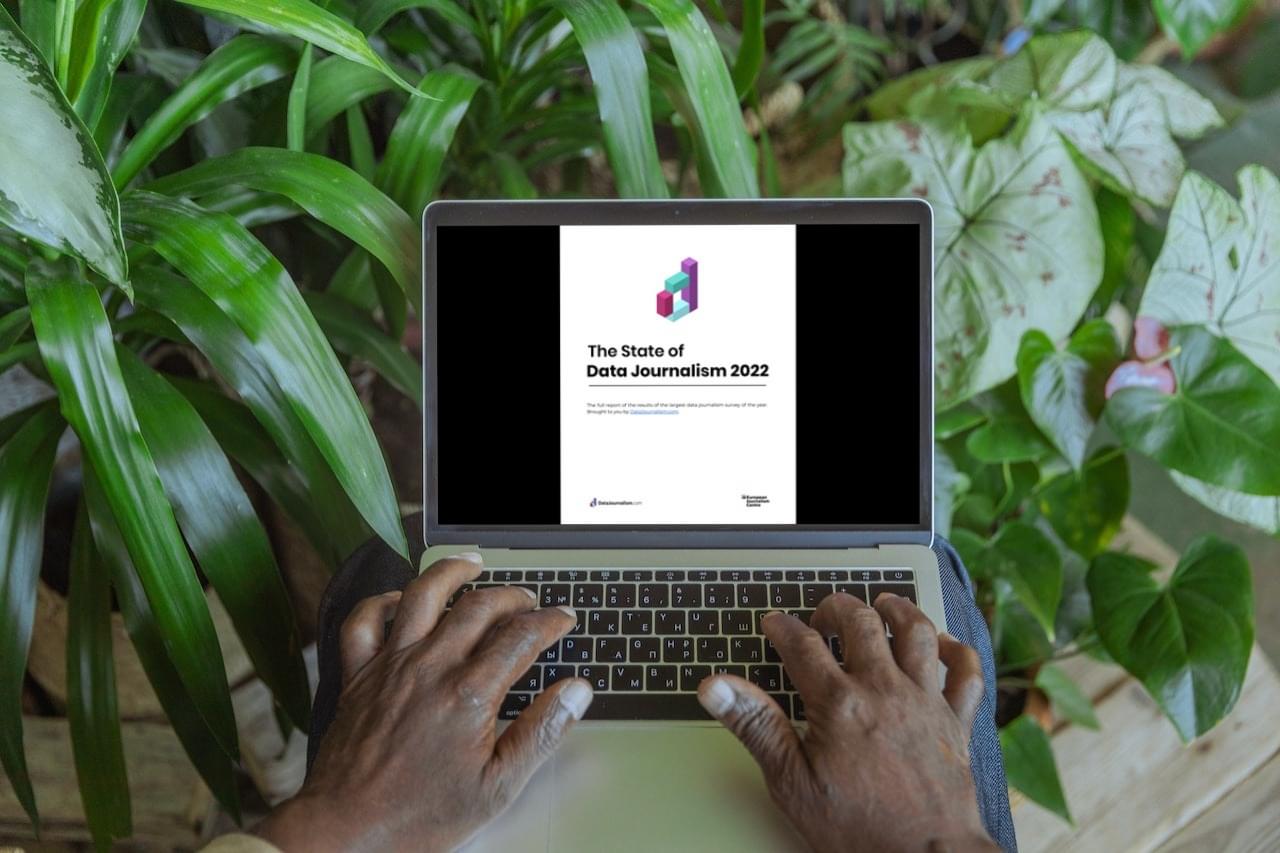
Announcement
Explore the results of our State of Data Journalism Survey 2022

The largest data journalism survey of the year covered the industry’s demographics, skills, tools, and work practices, and the impact of the Russia-Ukraine War on the field.
More than 1,800 reporters took part in the second edition of our Data Journalism Survey which aims to examine the field's trends, changes, and important events that marked 2022. We covered the industry’s demographics, skills, tools, work practices, and the impact of the Russia-Ukraine War and the Covid-19 pandemic on the field.

Our mission
Data journalism plays a crucial role in the media landscape as a rapidly evolving field. With many newsrooms having a dedicated data team and others striving to create one, it’s important to keep up with the latest developments in the field.
In 2021, we conducted the first State of Data Journalism Survey, the largest and most recent survey on data journalism. Its results highlighted the widespread practice of self-teaching and unequal data access and qualityacross different countries.
With the 2022 survey, we sought to resurface the aforesaid information. Also, adding a module on how the Russian invasion of Ukraine was covered.
By monitoring and mapping the state of data journalism and staying on top of the latest trends and best practices, we commit to continue supporting the data journalism community.
Methodology
The State of Data Journalism 2022 Survey comprised 63 questions and had 1809 respondents, of which 1751 were used for the analysis. The survey was organised into seven sections: demographics, industry structure, skills and tools, work practices, challenges and opportunities, and the impact of the Russian invasion of Ukraine and of the COVID-19 pandemic on data journalism. It was available in four languages: English, Italian, Arabic, and Spanish.
The main insights
Here are some of our key learnings:
1. Approximately 20% of data journalists reported on the conflict in Ukraine
Our survey revealed at least one in five data journalists covering the conflict, showing how widespread the conflict was reported on globally.
2. The majority of respondents believe the war has increased challenges around data verification
Regardless of whether it is at the organisation or the field level, most respondents believe the war has increased challenges around data verification (27% and 45%, respectively).
3. Over 1 in 3 data journalists are completely self-taught
How many people have learned data journalism all on their own? We found that 35% of respondents relied solely on self-study (online or offline). This figure has not changed significantly from last year, showing that the community continues to need more resources to expand its knowledge and skills.
4. Data journalism continues to be a predominantly male field
58% of respondents identify as men, 40% as women, 1% as non-binary/genderqueer and 1% preferred not to answer. These proportions are consistent with last year's results and confirm a higher proportion of men versus women in data journalism.
5. Data visualisation training is most in demand
Most instructors (78%) indicated that training in data visualisation is most in demand this year. This also aligns with the greatest interest in skills development (57%). In both cases, data analytics is a close second. Some 51% have a journalism background, while 43% have learned how to make sense of data through visualisation and analysis.
